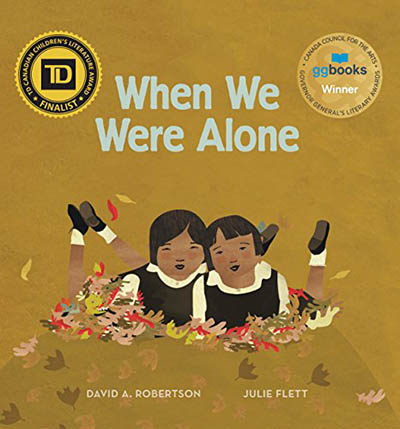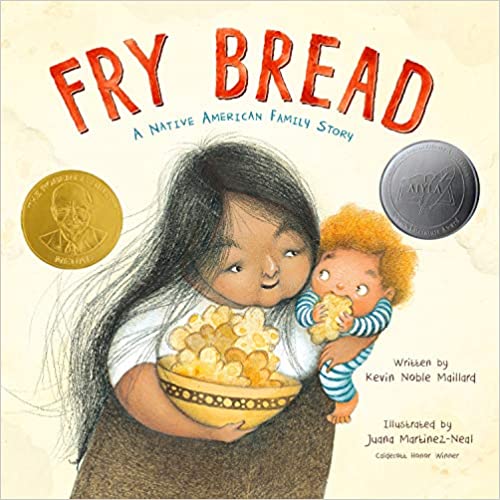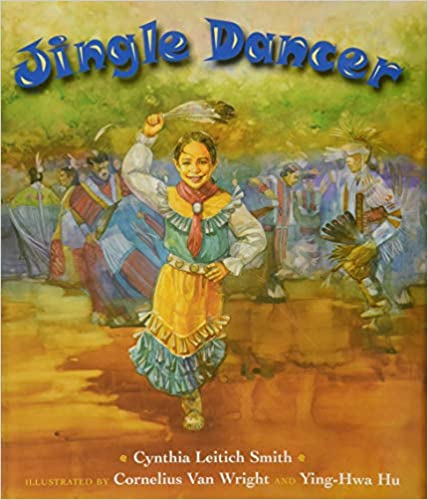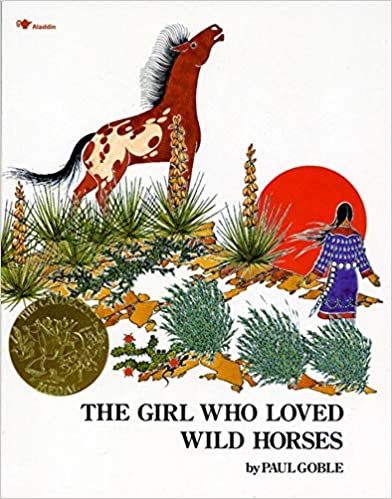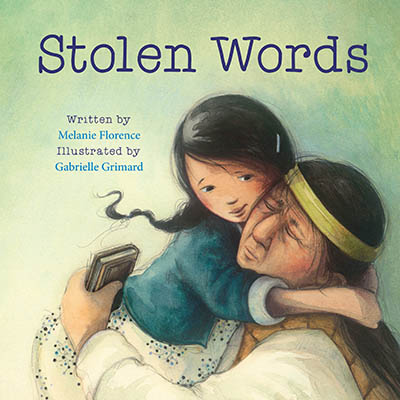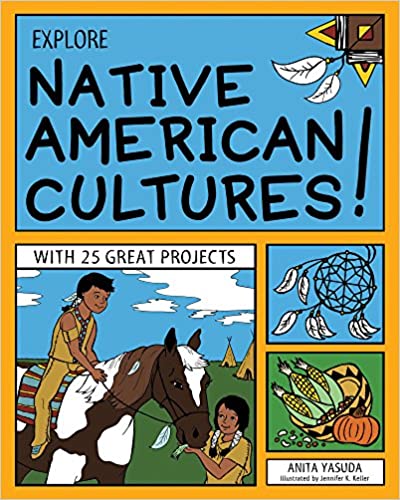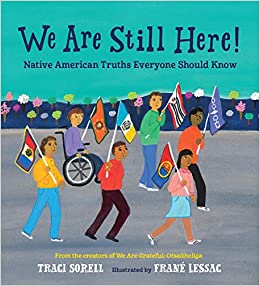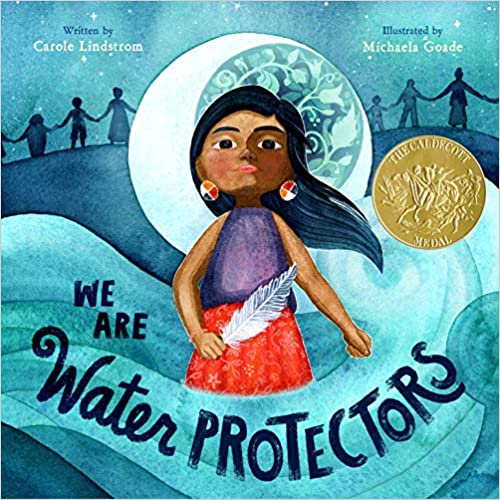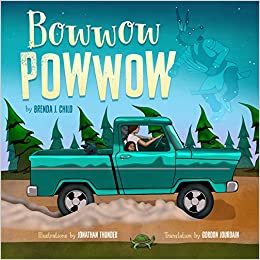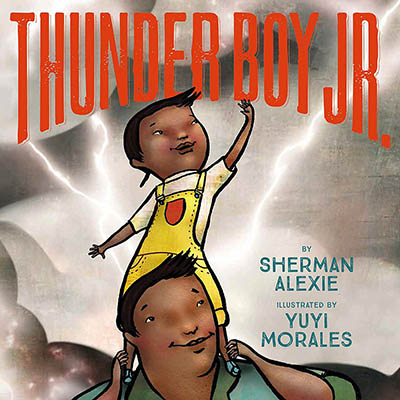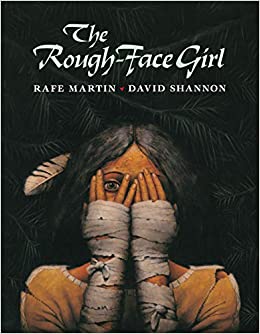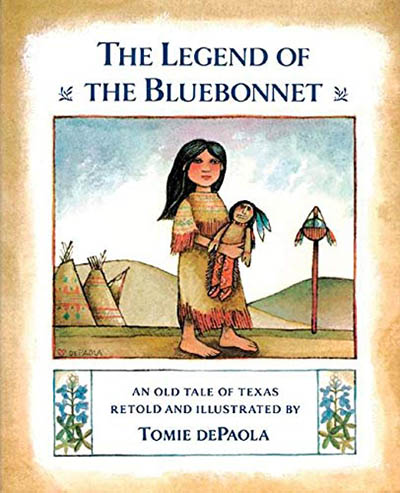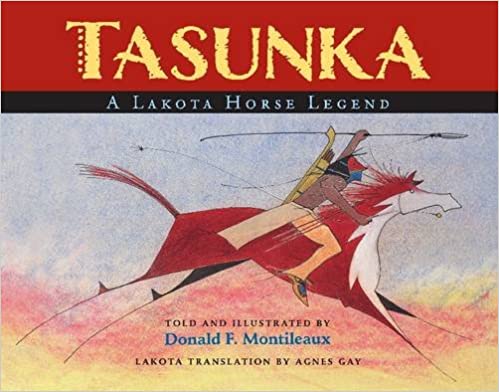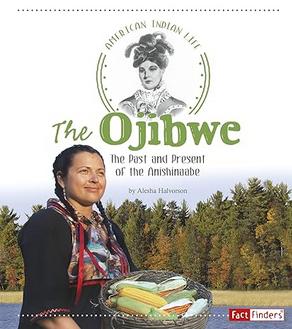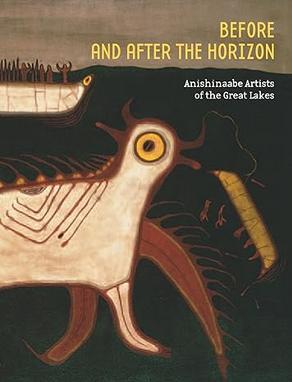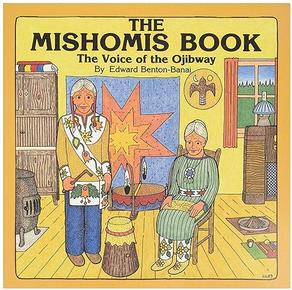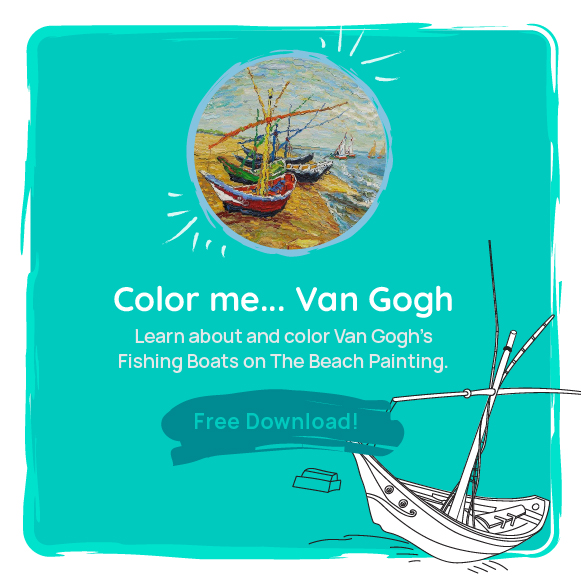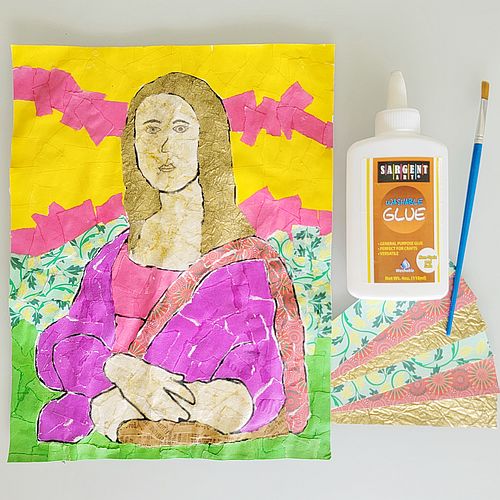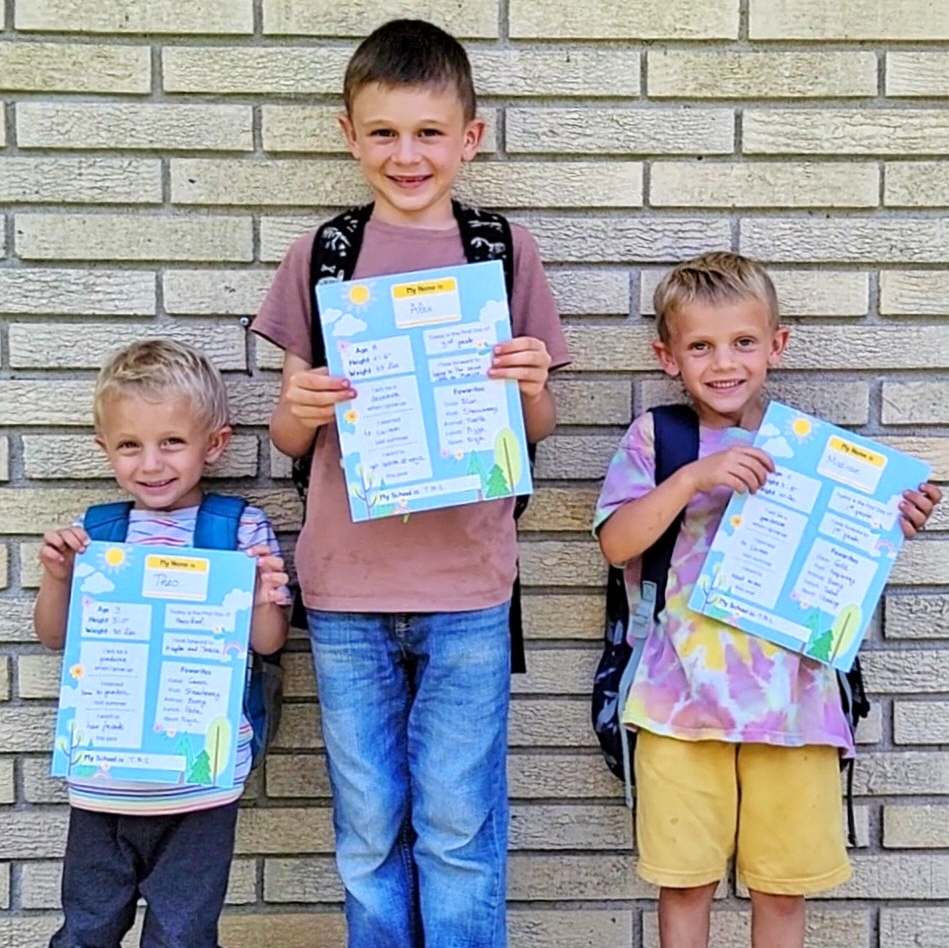In this list, you’ll see more than 15 recommendations for books about Native Americans, Indigenous people, and one of the most famous Indigenous artists, Norval Morrisseau. Families can open any one of these books to learn about the vibrant traditions, captivating stories, and profound wisdom of the Indigenous peoples of North America. It’s a meaningful way to explore the enchanting world of Native American stories and traditions, which are too often forgotten or discarded. With these books, every page is an invitation for kids and families to learn and grow.

You might also like these!
From approximately 1820 to 1970, the U.S. and Canadian governments sponsored “residential schools” for Native Americans. During this bleak and traumatic time in history, Indigenous children were removed from their families and forced to attend these schools. In this picture book, a young girl asks her grandma several questions about her bright clothes, her long braids, and her language. The grandma responds by telling the girl stories from her time at the residential schools. The book gently describes the harshness of these experiences but mostly focuses on how the grandma showed strength and optimism in each situation. It’s a poignant story that’s appropriate for children 5-9 years old.
Fry bread is much more than just food. It’s a cultural tradition that represents Native American heritage. This storybook is sure to capture the attention of young readers with its lively language and beautiful illustrations that highlight the diversity of the Native American community. It begins by describing the various shapes, sounds, and colors that fry bread takes on in different families. Then it turns to a more serious tone, describing fry bread as a way to unite the places, people, and traditions of various tribes. A detailed note from the author provides additional information about the metaphors she uses in the book, pointing to the spirit and resilience of Indigenous people. And, don’t forget, there’s also a fry bread recipe on the final pages!
This picture book introduces children to both the cultural heritage of Native Americans and the modern-day lives of these people. The story follows Jenna, a young girl who is determined to do a jingle dance at an upcoming powwow. The only problem—she doesn’t have any jingles! She sets off to visit several women and each one kindly lends her jingles. With her dress complete and ringing beautifully, Jenna dances at the powwow. Read this one with elementary children.
In this classic book, a Native American girl has a passion for horses. She takes care of the tribe’s horses until, one day, the skies unleash a thunderstorm and the horses are frightened into a stampede. The girl hops on a horse and hangs on with all of her might. When they stop, they’re surrounded by a herd of wild horses. Although her family wants her to come home, the girl knows her true place is with the horses. The bold illustrations and exciting storyline are sure to be captivating to children. Read this one with early elementary children.
This is another gentle book about the harsh realities of residential schools. The story follows a young girl and her grandfather who was forced to speak English as a child instead of his native Cree language. The little girl is then inspired to find a book about Cree and learn it alongside her grandpa. Throughout the story, the author emphasizes the cultural loss and the importance of language preservation in Indigenous communities. Heartwarming illustrations on each page highlight the tender relationship between the grandpa and the little girl. There are several Cree words used in the story and their definitions are explained in the back of the book. For families who want to learn more, the publisher offers an online guide for the book.
With the 25 hands-on projects in this book, kids can explore six regions of the U.S. and the Native American tribes that lived there! The beginning pages of each section provide a comprehensive overview of Native American history, traditions, and lifestyles. After that introduction, kids can learn more through crafting, building, cooking, and other interactive activities. All of the projects offer insights into traditional practices, food, art, and celebrations. It all comes together to foster a deeper connection and respect for Native American cultures. Work through the book with kids ages 6-10.
This colorful picture book describes the realities of the past by showing 12 chalkboard presentations from children at the Native Nations Community School. Each student presents information on a relevant topic such as assimilation, relocation, and language revival. The vivid folk art illustrations bring life to each of the topics in the book. After each child’s presentation, the author conveys the strength and permanence of the Indigenous community with the refrain of “We Are Still Here!” The final pages offer more details about each of the topics plus a timeline of important events. Read this one with upper elementary children.
This Caldecott Medal book is both beautiful and moving, sure to touch the hearts of any reader who cares about Mother Earth and her most precious resource: water. In fact, this book was written as a protest to the construction of the Dakota Access Pipeline. The words flow over each page and come together much like a poem. Each page is also filled with mystical watercolor illustrations. As you read, kids will see how all people and resources are interconnected. This is a great pick for introducing preschoolers and elementary children to the Native American community’s respect for nature.
As Windy Girl travels in the truck with Uncle, she hears stories about powwows and dancing traditions. Her dog, Itchy Boy, rides along in the truck too. One night, as Windy Girl goes to sleep listening to the beat of a powwow drum, she dreams of a dog powwow! She dreams of dogs in the drum group, in the jingle dress dancers, and even at the food stands. The illustrations will have kids laughing out loud! The stories that Uncle tells represent the blending of old traditions and new practices in Indigenous cultures. Plus, the Ojibwe translation appears below the English text on every page. Read this one with early elementary children.
Kids will delight to follow along with this story featuring a little boy named Thunder Boy Jr. He’s named after his dad, Big Thunder, but this little tike is not happy with his name. In fact, he hates it! He wants a better name that represents who he is. Maybe “Mud in Ears” or “Can’t Run Fast While Laughing.” Just when he’s lost all hope, his dad comes to him with a brand-new name: Lightning. It’s the perfect complement to Big Thunder. This is an imaginative book with comical illustrations and a true child-like feel. Read it with early elementary children.
In this Native American (Algonquin Indian) retelling of Cinderella, a young girl is bullied by her two older sisters. The young girl is forced to tend to the fire where she gets burned and her skin becomes scared, giving her a rough face. When her sisters go to visit the Invisible Being, the prince of this story, they are rejected. But, when the young girl goes to him, there’s a focus on inner beauty and she is accepted. It’s a story that’s much deeper and richer than the traditional retelling of Cinderella. Each page is accompanied by exquisite artwork that makes the text even more meaningful. Read it with upper elementary children.
As the Legend of Bluebonnet begins, the Comanche people are experiencing a devastating drought and famine. One girl, She Who Is All Alone, has a warrior doll that’s been with her throughout these difficult years. When the shaman says the people must make sacrifices in order to bring rain, the girl offers her doll to the spirits. In the morning, there’s a beautiful surprise of bluebonnet flowers and rain. This is a classic legend that will appeal to elementary children.
The Lakota people have handed down the legend of Tasunka (horse) for hundreds of years. This story tells how the people found and tamed a small herd of colorful wild horses. Because they are able to use the horses to hunt game and conquer other tribes, this discovery propels the tribe to wealth and abundance. But when they start to become too proud, the spirits take the horses away. Tasunka didn’t return until settlers brought horses to the land. The illustrations are just as dramatic as the story, showing movement and energy. In addition, each page also features the story told in the Lakota language. Read this one with elementary kids.
This “Fact Finder” book will help kids understand the full history of the Anishinaabe people. They’ll first read about the ancestral traditions and behaviors of the Anishinaabe. They’ll also read about the great losses and dramatic changes that were brought about by European settlers. The book wraps up with a look at how the Anishinaabe live today. Throughout the book, children will see maps, photographs, and other illustrations. Children ages 10+ can read through this book on their own. Younger children will enjoy reading through it with an adult.
Children can take in 500 years of Anishinaabe history with this beautiful book. It’s visually stunning and packed with full-color artwork! Each piece of art was featured in a 2013-14 exhibit at the National Museum of the American Indian. Kids will see pieces from Norval Mossisseau, George Morrison, Blake Debassige, Daphne Odjig, and others. The book also contains commentary that analyzes the artists’ work and discusses Anishinaabe spiritual and social traditions. Kids of any age will delight in the artwork while teens and adults will enjoy the commentary.
Norval Morrisseau was of Ojibway (Anishinaabe) ancestry, and this book provides an introduction to the traditions, teachings, and legends of the Ojibway people. It’s an authentic, engaging book written by an Ojibway teacher and spiritual leader. There are line-drawn illustrations throughout the book, but with 114 pages, it’s quite text-heavy. We recommend reading one chapter at a time with children ages 8+.




